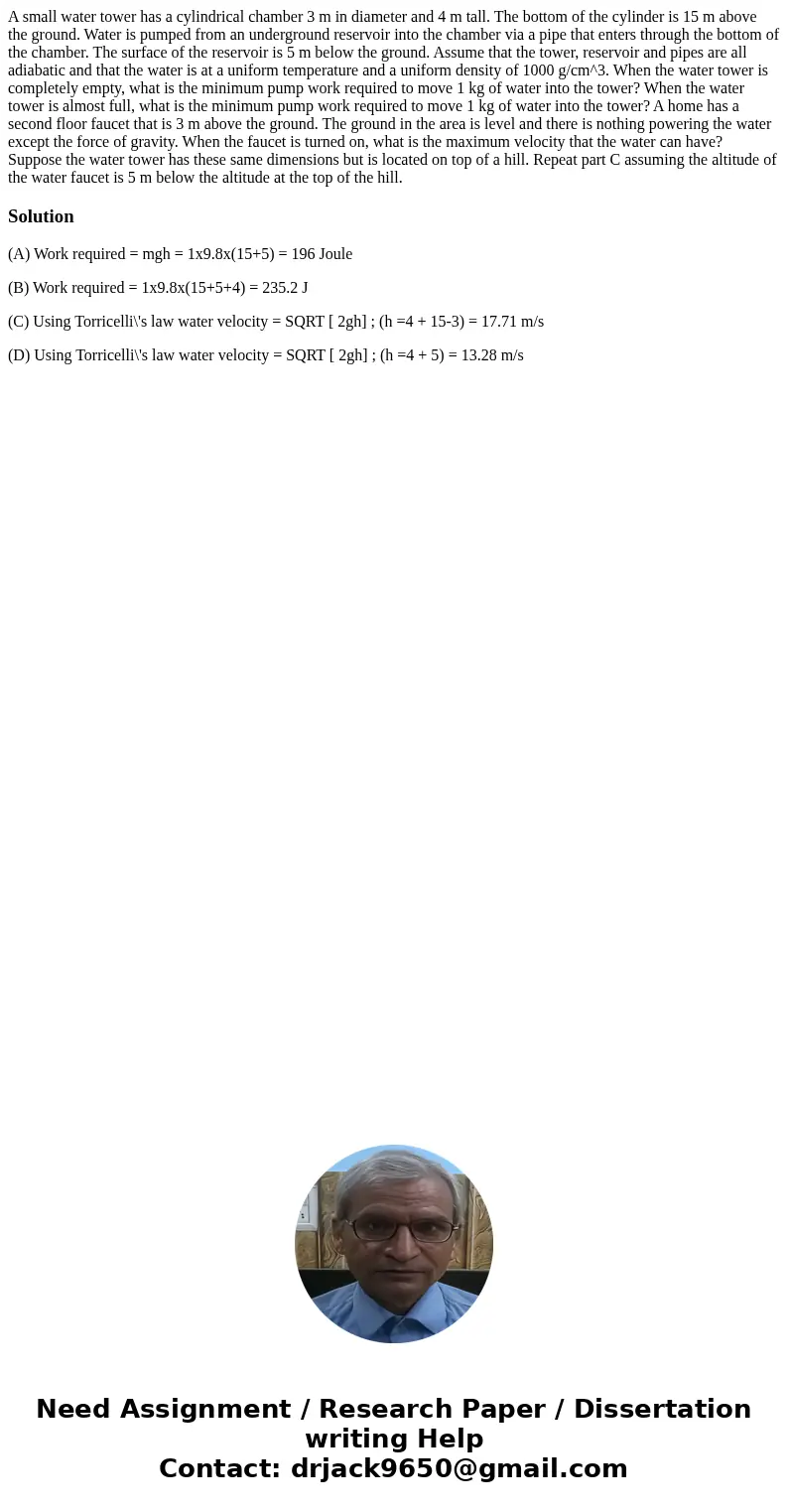A small water tower has a cylindrical chamber 3 m in diamete
A small water tower has a cylindrical chamber 3 m in diameter and 4 m tall. The bottom of the cylinder is 15 m above the ground. Water is pumped from an underground reservoir into the chamber via a pipe that enters through the bottom of the chamber. The surface of the reservoir is 5 m below the ground. Assume that the tower, reservoir and pipes are all adiabatic and that the water is at a uniform temperature and a uniform density of 1000 g/cm^3. When the water tower is completely empty, what is the minimum pump work required to move 1 kg of water into the tower? When the water tower is almost full, what is the minimum pump work required to move 1 kg of water into the tower? A home has a second floor faucet that is 3 m above the ground. The ground in the area is level and there is nothing powering the water except the force of gravity. When the faucet is turned on, what is the maximum velocity that the water can have? Suppose the water tower has these same dimensions but is located on top of a hill. Repeat part C assuming the altitude of the water faucet is 5 m below the altitude at the top of the hill.
Solution
(A) Work required = mgh = 1x9.8x(15+5) = 196 Joule
(B) Work required = 1x9.8x(15+5+4) = 235.2 J
(C) Using Torricelli\'s law water velocity = SQRT [ 2gh] ; (h =4 + 15-3) = 17.71 m/s
(D) Using Torricelli\'s law water velocity = SQRT [ 2gh] ; (h =4 + 5) = 13.28 m/s

 Homework Sourse
Homework Sourse